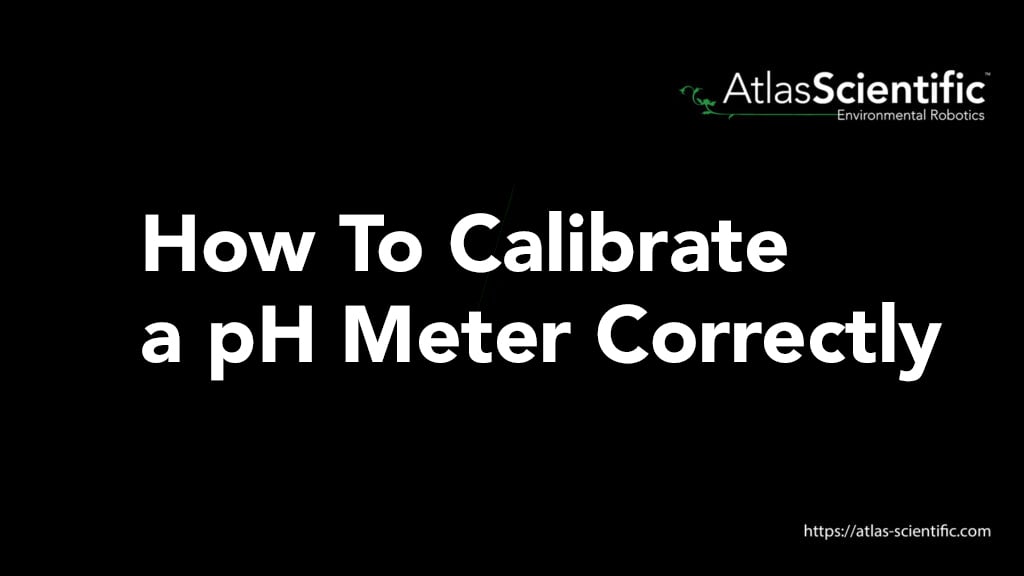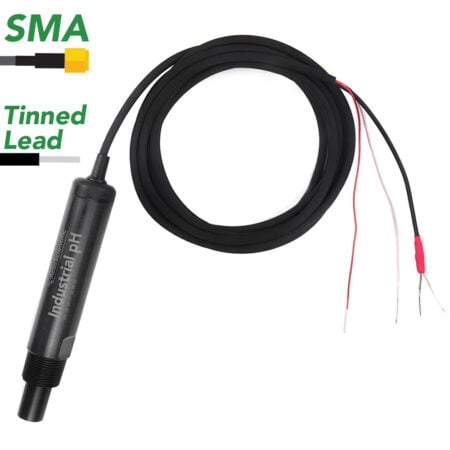Subtotal: $9.99

What Is pH Drift And How To Fix It? A Complete Troubleshooting Guide
pH drift is a common yet critical challenge in both industrial and laboratory environments, where the pH value moves away from the true, expected pH
Product Categories

To calibrate a pH meter correctly, at least a two-point calibration is required, using two different buffer solutions (pH 4 and pH 7). For high-accuracy pH measurements, a three-point calibration (pH 4, pH 7, and pH 10) is used. After rinsing with distilled water, the pH probe (electrode) is inserted into the solution until the pH level has stabilized, and the pH meter has correctly matched the pH value of the calibration solution.
One of the most overlooked steps in pH testing is pH meter calibration. Calibrating a pH meter correctly is a necessary step when testing the pH of a solution. This is because the electrodes inside the pH probe change over time, which can cause errors. Therefore, calibration is essential to determine an accurate pH level.
In this article, we will be explaining how to calibrate a pH meter correctly, and what buffer solutions are required.
A pH meter has three components: a pH meter, a reference pH electrode, and a pH probe.
The two electrodes inside the pH probe measure the hydrogen-ion activity in a solution, such as water. The exchange of ions generates a voltage, which is then measured and converted by the pH meter into a readable pH value.

Determining the pH provides the user with a number ranging from 0 to 14, where 7.0 is neutral, anything above 7.0 is alkaline (or basic), and a pH value above 7.0 is acidic. Measuring pH is essential in a wide range of applications, but it is more critical in industrial applications such as environmental monitoring, quality control in food and beverages, water pre-treatment systems, and medical and laboratory applications.
For high accuracy and repeatable results, a pH meter containing a pH sensor is used. Without correctly calibrating a pH meter, these industries cannot obtain an accurate pH.
An essential part of measuring a sample’s pH is to calibrate the pH meter. Therefore, pH calibration solutions are one of the most important pieces of testing equipment.
Calibrating the pH meter correctly ensures the electrode inside the pH probe has not drifted off or is damaged. Inaccurate pH readings come from poor calibration, storage, and cleaning of the pH meter. These quality and safety methods are part of the standard operating procedure (SOP) when calibrating pH meters correctly.

At Atlas scientific, we only use professional-grade pH calibration solutions to ensure your results are consistent and accurate. We recommend calibrating the pH meter with at least a 2-step calibration process to check the offset and the slope of the pH meter.
If after calibration, the offset and slope of the electrodes are significantly different from what the user manual states, it is likely your pH electrodes are damaged or contaminated.
To calibrate a pH meter correctly, you will need at least two different buffer solutions. The two main buffer solutions are the pH4 and pH7 solutions. Sometimes an additional calibration solution is used (pH10).
The different calibration solutions ensure you obtain the correct pH values when the pH meter measures the solution. Before measuring the pH of a solution, always check the buffer/calibration solutions are within date and are fresh. The steps to calibrate the pH meter correctly are straightforward.

Our preferred method is a 3-point calibration to achieve the most accurate results.
If it is the first time using your pH meter, the 3-point calibration is performed in the following order: mid-point pH (neutral), low-point pH (acidic), then a high-point pH (alkaline) buffer solution. The most common buffer solutions to conduct a 3-point calibration are neutral (pH 7.0), acidic (pH 4.0), and alkaline (pH 10.0).

A two-point calibration will also provide you with high-accuracy results. The buffer solutions used for 2-point calibration are 7.0 and 4.0. We lean towards 3-point calibration as they provide a higher accuracy over a full pH range.
The mid-point calibration must be done first, as it clears the other calibration points.



As opened calibration solutions are no longer considered accurate after 20 minutes, dispose of the used AND unused solution. At Atlas Scientific, we always use fresh, unused, and unexpired pH buffer solutions for calibration. Once a buffer solution has been opened, we can assume that they are contaminated and therefore, are no longer suitable to calibrate pH meters.
As previously mentioned, three separate buffer solutions can be used to calibrate a pH meter correctly, as you cannot accurately calibrate a pH meter without a solution.
In addition to the standard buffer solutions (pH 4.0, 7.0, and 10.0), technical and millesimal solutions are also available in seven pH values ranging from 1.68 to 10.0. Technical calibration solutions provide users with the same accuracy and specifications as standard solutions.
As for millesimal buffer solutions, these are used when a precise pH measurement resolution of 0.001 is required, for example in medical, drinking water, and laboratory applications. The type of calibration solution will depend on how precise you require the pH readings.
As a rule of thumb, whichever buffer solution you use to calibrate your pH meter correctly, ensure that the surrounding temperature is around 77 °F (25 °C) to obtain accurate readings.
You should also keep your buffer solutions well-stocked to correctly calibrate the pH meter. This is a key step in pH testing and cannot be understated.
How often you calibrate a pH meter depends on its usage and the possibility of contamination. The more you use a pH meter and the higher likeliness of contamination, the more frequently you will need to recalibrate the meter.
We recommend calibrating/recalibrating your pH meter correctly when:
When your pH meter first arrives, remove the pH probe from the packaging and soak it in a cup containing additive fluid for at least 4 hours. The same if your pH probe has been dry for a long time. If you regularly use the pH meter, soak the electrode in a cup of tap water for 15 minutes.
When a pH electrode reaches the point where it no longer provides accurate readings or is unable to stabilize in the different buffer solutions, it is time for a replacement pH probe.
Calibrating and gauging a pH meter are two terms that are often used interchangeably, yet they are not the same term. Calibration determines how far the pH value is from the standard pH level of the buffer solution. The point is to determine the accuracy of the pH meter to ensure the results are correct.
Gauging is slightly different. It is the official verification given to the pH meter to meet legal regulations. For example, if a pH meter is correctly used but rejected, the pH meter is typically not used again. Gauging a pH meter is very important in high-precision water quality testing in medical/laboratory applications and drinking water supplies.
Several things can influence a pH meter’s functionality. From drifting readings to slow response times, we will cover your troubleshooting needs!

When measuring larger sample volumes, the pH readings take slightly longer to reach equilibrium and therefore may drift until the pH value stabilizes.
You may also think the pH reading is drifting when measuring a liquid that is considered clean. The CO2 in the sample can cause the pH value to change until the sample is stationary and has time to react with the air.
If you have a new electrode, do not worry if it responds slower than during calibration, as this is normal. However, as pH electrodes age, they do respond slightly slower. pH meters also have slow response times when the electrode becomes dirty or dried out.
If your pH meter is not calibrating, ensure the calibration buffer solution is fresh and unexpired. If it is still not calibrating, try changing the batteries and resetting the tester before calibrating again.
In addition to general cleaning your pH meter, ensure you have removed salt deposits by submerging the pH electrode in 0.1 M HCl for 5 minutes followed by 0.1 M NaOH for another 5 minutes. Finish off by rinsing the electrode with distilled water.
Wash the sensor bulb in methanol or a mild detergent to remove oil and grease buildup.
You also want to prevent the reference junction from clogging. Place the pH electrode into a heated diluted KCL solution for 10 minutes and allow it to cool before use or storing.
In addition to properly cleaning, storing, and calibrating your pH meter, there are a few things you can do to ensure your pH meter readings are more accurate.
Calibrating a pH meter correctly is essential for accurate pH readings in any industry or application. The accuracy of the pH meter is identified by calibrating the electrode (pH probe) with at least two different pH calibration solutions.
Calibrating the pH meter can be a lengthy process. However, following the steps mentioned will calibrate your pH meter correctly.
If you are still unsure how to calibrate your pH meter correctly or do not know which pH values of buffer solution best suit your needs, do not hesitate to reach out to the world-class team at Atlas Scientific.







pH drift is a common yet critical challenge in both industrial and laboratory environments, where the pH value moves away from the true, expected pH

Hydrofluoric acid is an extremely versatile industrial chemical vital in semiconductors, manufacturing, fluorinated compounds, metal processing, glass etching, and petroleum refining. Although hydrofluoric acid is